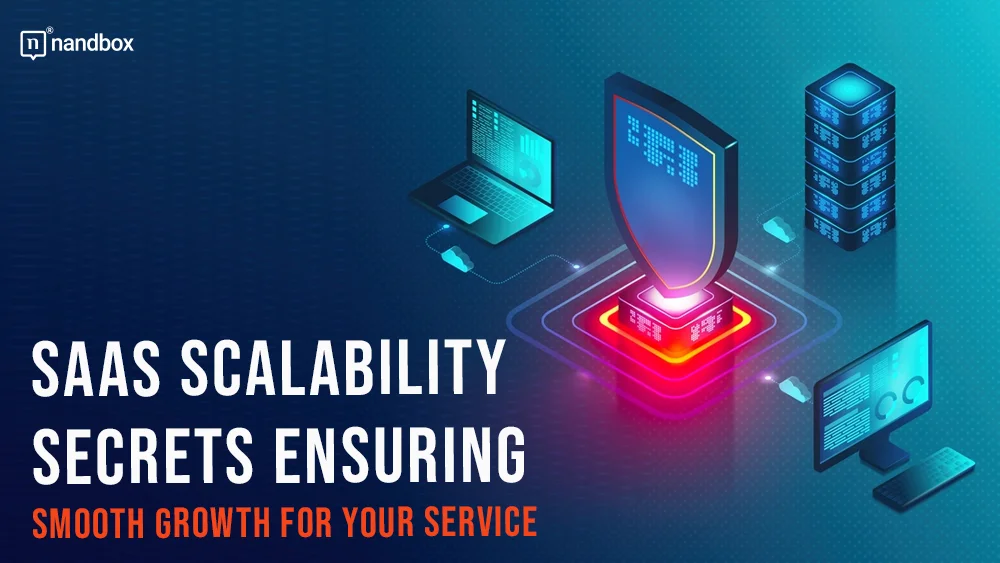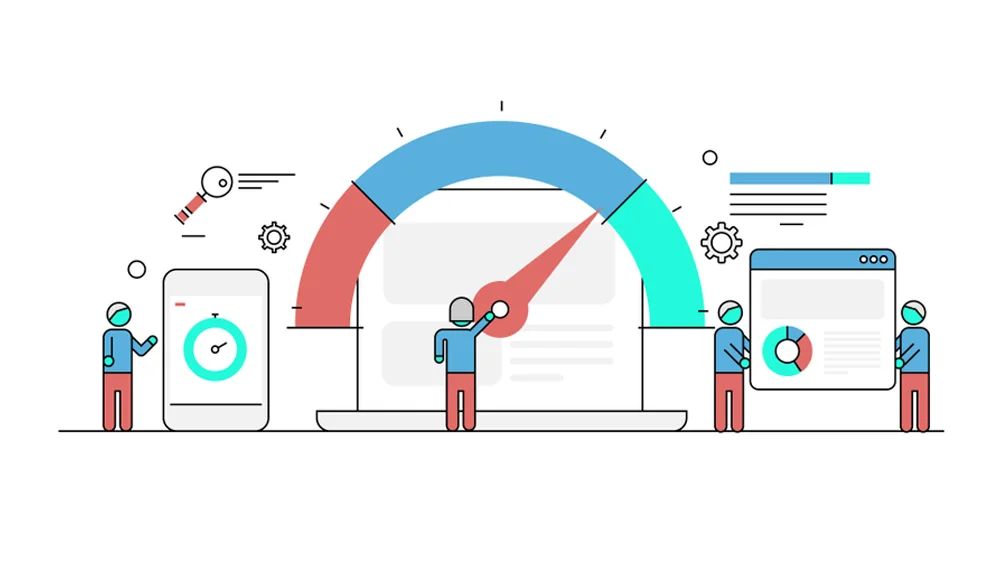In today’s SaaS-dominated business world, mastering scalability is essential for success. This guide explores strategies and practices for achieving sustainable growth in a competitive market.
What Is SaaS?
Software as a Service (SaaS) is a cloud-based model where users access applications via the internet browser, eliminating the need to download and install software on individual devices or networks. These applications, spanning from office software to unified communications and beyond, offer a wide array of business solutions readily available for use.
A Guide To A Successful SaaS Scalability
Scaling a SaaS business involves navigating a complex web of challenges and opportunities. Achieving success in this arena necessitates a profound comprehension of both technical scalability issues and strategic business growth tactics. This discussion delves into the secrets of SaaS scalability, covering essential strategies, technical insights, and business practices.
Architecting For Scalability
The architecture underlying a SaaS application plays a crucial role in its scalability, affecting everything from performance to cost management. Here’s a closer look at how different aspects of architecture contribute to scalability.
Microservices Architecture
The transition to microservices architecture marks a significant shift from traditional monolithic application designs. By breaking down application integration into smaller, interconnected services, each responsible for a specific function, microservices architecture allows for more refined control over resources. This architecture enables individual components of an application to scale independently as demand changes without requiring the entire application to scale.
Elastic Cloud Resources
The adoption of cloud platforms plays a pivotal role in SaaS scalability. Cloud platforms offer elasticity, which is the ability to adjust computing resources based on real-time demand automatically. Additionally, look for cloud discounts for SaaS to help your businesses manage costs effectively.
This capability ensures that a SaaS application can handle peak loads without any manual intervention, thereby maintaining optimal performance levels. Elastic resources mean that during periods of low demand, resources can be scaled down, leading to significant cost savings and avoiding wastage of computing power.
Database Scalability
As the backbone of most applications, the database’s ability to scale effectively is critical. Strategies like sharding, implementing read replicas, and ensuring proper indexation are essential for database scalability. Sharding involves dividing a database into smaller, more manageable pieces, or shards, each capable of being hosted on different servers.
Read replicas enhance read capacity by allowing data to be replicated in real-time to secondary databases, which can then handle read queries, thereby reducing the load on the primary database. Proper indexation ensures that queries are executed more efficiently, reducing the time it takes to access data and improving the database’s overall performance.
Performance Optimization
By employing these strategic approaches, SaaS providers can significantly enhance the user experience, leading to increased satisfaction and retention. Here’s a deeper dive into these optimization techniques.
Caching Strategies
Caching reduces load times and eases backend strain by storing data for quick access. Content Delivery Networks (CDN) enhance this by distributing cached assets globally, ensuring users access data from the nearest server to minimize latency.
Load Balancing
Load balancing entails the distribution of incoming network traffic across numerous servers to prevent any single server from experiencing excessive load, thereby averting potential failures or performance degradation. This is particularly important during traffic spikes, where the volume of requests could overwhelm a single server or data center. Load balancers act as traffic cops, ensuring that requests are evenly distributed so that all users experience consistent service quality.
Optimized Code
The foundation of any application’s performance lies in its codebase. Regularly refactoring and optimizing the code can have profound effects on efficiency and speed. This process involves revising and rewriting parts of the code to eliminate redundancies, improve algorithms, and remove outdated functions that may no longer be efficient or secure.
Reliability And Security
Maintaining a high level of reliability and security is not just an option—it’s imperative. As users entrust providers with critical data and operations, the expectation for constant availability and stringent SaaS data protection becomes paramount.
Comprehensive Monitoring
A robust monitoring system acts as the early warning system of a SaaS application, designed to detect and alert issues before they escalate to affect the end user. This encompasses monitoring application performance metrics such as response times, server load, and transaction volumes, alongside security monitoring to identify suspicious activities or potential breaches.
Disaster Recovery Planning
Despite the best efforts to prevent incidents, the reality is that outages, data losses, or security breaches can still occur. Disaster recovery planning prepares a SaaS provider to respond effectively to such incidents, minimizing downtime and mitigating the impact on users. This involves creating a detailed plan that outlines procedures for data backup, system restoration, and communication with stakeholders during and after an incident.
Data Security
Protecting sensitive user information is a cornerstone of SaaS reliability and security. This involves implementing stringent data security measures that encompass encryption of data in transit and at rest, regular security audits to uncover vulnerabilities, and adherence to regulatory compliance standards such as the General Data Protection Regulation (GDPR) and the Health Insurance Portability and Accountability Act (HIPAA).
Business Growth Strategies
The trajectory of a SaaS business is significantly influenced by its approach to growth. By meticulously crafting strategies around these areas, a SaaS business can ensure a robust pathway to success and scalability.
Flexible Pricing Models
A dynamic and flexible pricing strategy is vital to attracting and retaining a diverse customer base. By offering scalable pricing models, SaaS providers can cater to the varied needs and capacities of different customers, from startups seeking cost-effective solutions to large enterprises in need of comprehensive feature sets. Flexibility in pricing also means allowing customers to adjust their subscriptions as their needs evolve, providing them with the exact value they require at each stage of their growth.
Customer Success Focus
The heart of sustainable growth in the SaaS world lies in ensuring customer success. This goes beyond traditional customer service; it’s about actively helping customers achieve their goals using your product. Investing in a robust customer success program means dedicating resources to onboarding, education, and ongoing support, ensuring that customers can maximize the value they derive from your service.
Market Expansion
Expanding into new markets and customer segments is a crucial strategy for accelerating growth. This involves identifying untapped markets or segments within existing markets that have unmet needs your service can fulfill. Expanding geographically, especially into international markets, may require localization of the service offering to meet the specific needs and preferences of those markets, including language, compliance with local regulations, and cultural customization.
Building A Scalable Team
Cultivating a scalable team involves strategies in talent management, continuous learning, and leadership development, each critical to navigating the challenges and opportunities of scaling a SaaS business.
Agile Talent Management
Building a flexible and agile team means prioritizing adaptability and cultural fit alongside technical skills during the hiring process. An agile team can swiftly respond to changing market demands, pivot strategies when needed, and embrace new technologies or methods without disruption. This agility allows the organization to scale operations quickly, ensuring that the team’s growth aligns with that of the business.
Continuous Learning And Development
Encouraging continuous learning and development within the team is crucial for staying ahead of the curve. This could involve structured training programs, access to online courses, participation in industry conferences, or simply fostering a culture that values knowledge sharing and innovation. By investing in the ongoing development of its team, a SaaS business ensures that its employees are not just equipped with the latest skills and knowledge but are also motivated and engaged.
Leadership In Scaling
Equipping leaders to manage SaaS business scaling is crucial. They must handle growth complexities, like strategic choices, team expansion, culture preservation, and operational efficiency. Leadership development methods include mentorship, training programs, and assigning emerging leaders with challenging projects.
Conclusion
Adhering to these foundational principles offers not just a roadmap to scalability but also a blueprint for building a resilient, innovative, and customer-centric SaaS enterprise. As the digital world advances, those SaaS platforms that master these secrets of scalability will not only thrive but also lead the way in shaping the future of technology and service delivery.





